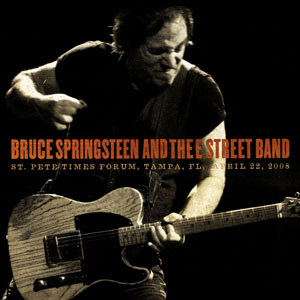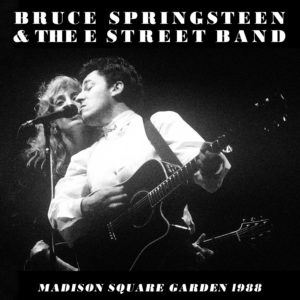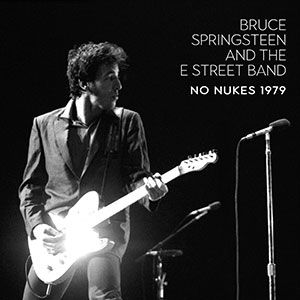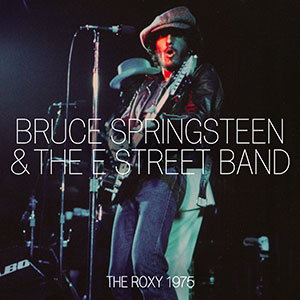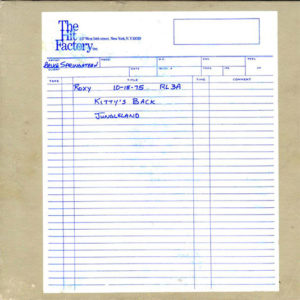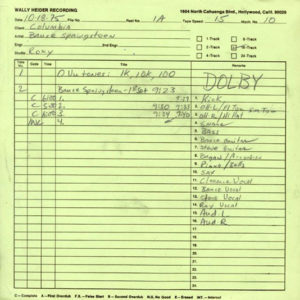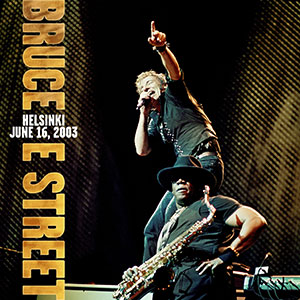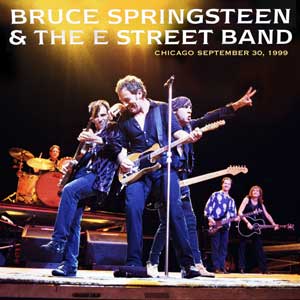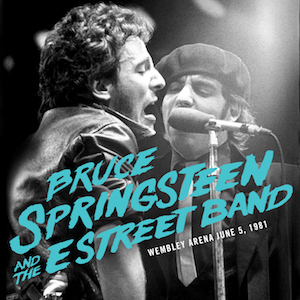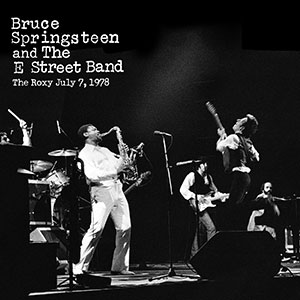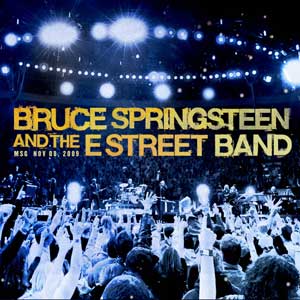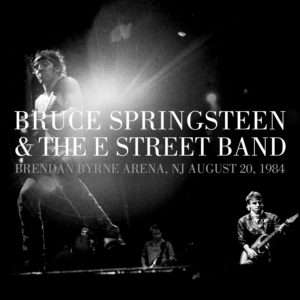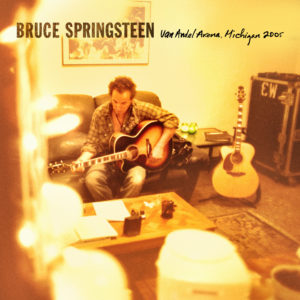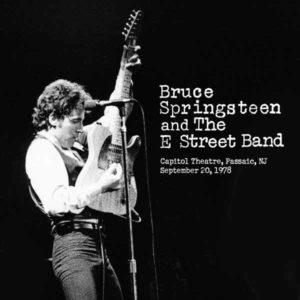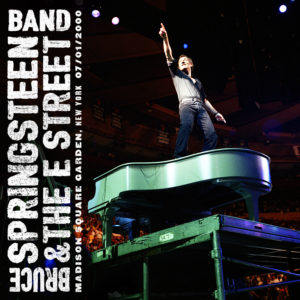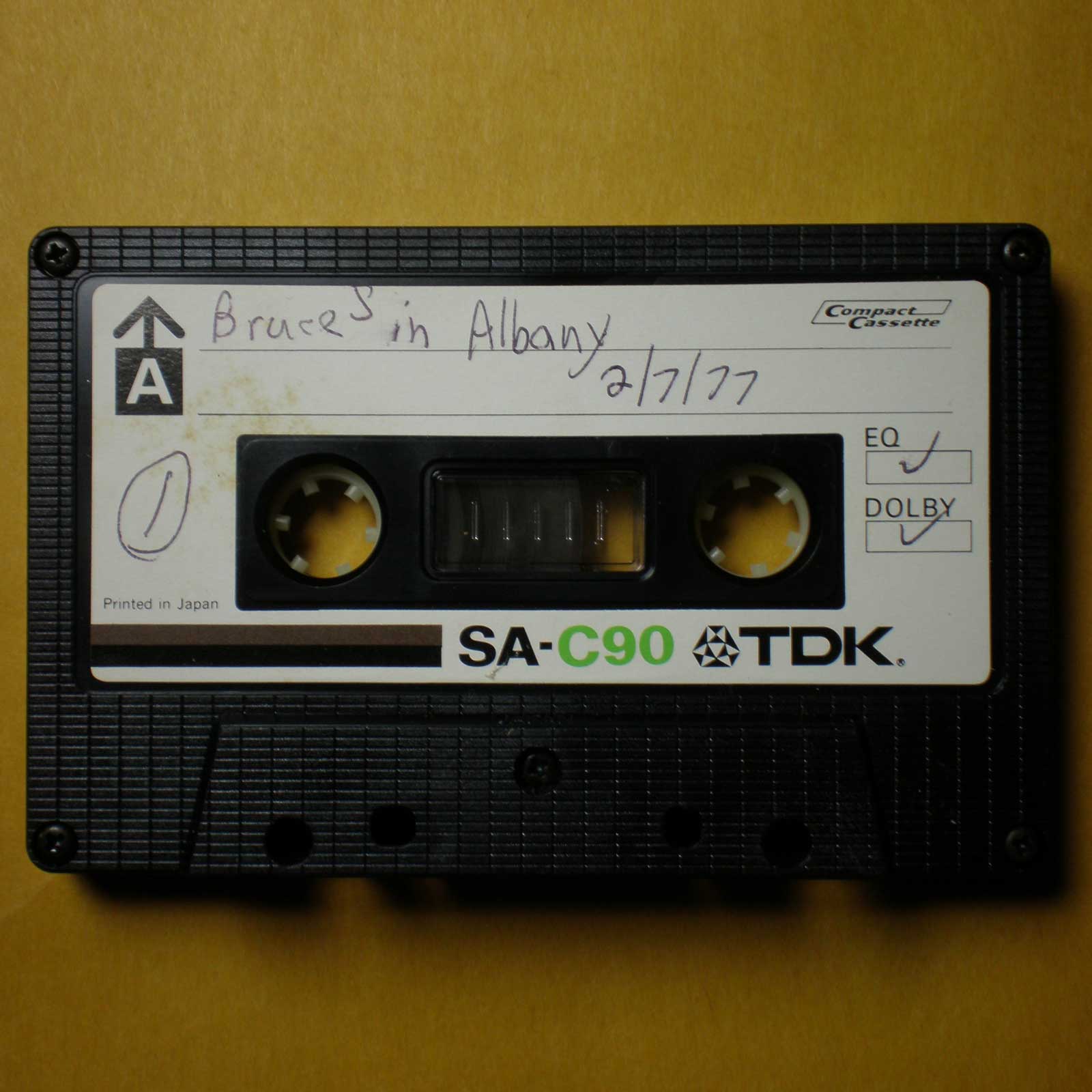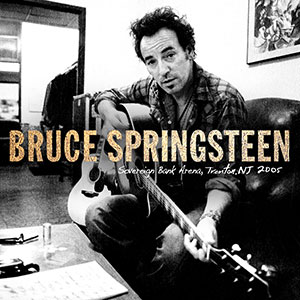
Bruce Springsteen
Sovereign Bank Arena, Trenton, NJ, November 22, 2005
By Erik Flannigan
If one were to assign a single attribute to every tour across Bruce Springsteen’s career, audacious would be an apt one for the 2005 Devils & Dust tour.
Over the course of 72 shows, Bruce took the stage alone, surrounded by a phalanx of guitars and keyboards, fearlessly revisiting and reinterpreting every corner of his catalog down to the deepest nook and cranny. Be a song rarely or never played, or often played but never like this, night after night the Devils & Dust tour offered fascinating alternate readings of music we thought we knew inside-out.
Bruce’s new album of the same name, his third solo record, was the jumping off point, full of character-driven stories that fit squarely into what he declares in Trenton are the two types of songs he knows how to write: songs of hope and songs of eternal damnation.
Springsteen had an equally strong body of work in hand for his previous solo tour in support of The Ghost of Tom Joad, but in 1995-97, performing exclusively on guitar and harmonica, he was selective in what complementary tracks were added to the set. In fact, Bruce debuted a number of new original songs in the spirit of Joad over the course of that tour (some, admittedly, more lighthearted than the album, but still akin), while deep cuts were more selective.
The addition of piano and keyboards in 2005 unlocked dozens of other songs for inclusion and opened up tour setlists to remarkable levels. Bruce’s approach suggested the new D&D material connected to everything that came before. In hindsight, there’s a sense of Springsteen on a mission to look back at his songwriting accomplishments and take many of them back out for a ride to see what they would reveal, an early hint perhaps of his budding autobiographical mindset. Without a doubt, the self-effacing candor and humor with which Springsteen addressed audiences on the tour are precursors to the voice he would come to refine for Springsteen on Broadway.
Trenton 2005, the final show of the tour, captures all these aspects of the Devils & Dust journey wonderfully, with a setlist full of bold surprises and striking moments. It begins with Link Wray’s “Rumble,” a tribute to the electric guitar pioneer who helped shape the sound of rock ’n’ roll. On this night, however, acoustic guitar is the stringed instrument of choice, and we get several exceptional performances.
The Rising’s “Empty Sky” gets a strong solo airing, played with thumping purpose and pace. “Saint in the City” is transformed by a radical slide guitar re-arrangement and bullet mic vocals. The song remains one man’s boastful declaration, and there’s still plenty of heat and humidity in the air, but the locale has moved from Shore towns to somewhere along the Mississippi Delta. The result couldn’t feel more different. Bruce is clearly enamored with the approach and walks “Fire” down the same bluesy backporch path, with the bullet microphone giving the song a fitting AM-radio filter.
Reimagination is a touchstone all evening, and the next subject is “All the Way Home.” The solo acoustic rendition on the 2005 tour recalls demos for The River, sharing the spirit of Bruce’s 1979 compositions and the Power Station band version that could have been. Material from Devils & Dust holds its own in such company, with well-honed versions of the title track, “Long Time Comin’,” “Matamoros Banks,” and a beautifully sung “Leah.” He even pulls out a ukulele for a sing-along rendition of “Growin’ Up” towards the end of the set.
Springsteen’s keyboard playing, always carrying with it a seductive hint of performance anxiety, is one of the most memorable aspects of the 2005 tour. His willingness to take the risk again and again on songs he hadn’t played in decades is why Audacious is such an appropriate descriptor.
After a lovely and lilting electric piano version of “All That Heaven Will Allow” (the same instrument on which he so memorably performed “Tunnel of Love” on the previously released Grand Rapids 2005 show), Bruce acknowledges his tentative playing, telling the Trenton faithful that their applause at end of his piano solos was “anxiety clapping” that “he made it through.”
In truth, the passion in Springsteen’s piano and organ playing is much more important than the precision. Limited as he might feel it is, his keyboard expression creates intimate moments between the performer and audience heightened by that touch of uncertainty.
Trenton offers a treasure trove of piano, organ, and keyboard gems. Bruce resurrects “My Beautiful Reward” from Lucky Town with fitting majesty on pump organ and plays “Backstreets” with touching reverence, in one of but three solo piano performances on the tour. “Drive All Night,” revived for the first time in 24 years just a few shows prior, captures the conviction of an artist rediscovering the magic of a forgotten work. “Jesus Was an Only Son” gets an insightful preamble that is right out of the pages of Born to Run. And who could imagine the three-ring circus that is “Thundercrack” could be tamed into such an entertaining solo-piano rendition and still carry the song’s evocative spirit.
For veteran setlist trainspotters, Trenton has a couple of bombshells. One of Springsteen’s most beloved early outtakes, “Zero and Blind Terry,” had not been performed since 1974 and never as a solo piano piece. It’s one of those romantic fairy tales that could have easily slipped onto Wild & Innocent, a Jersey fable that mythologizes young lovers trying to escape to a better life beyond Route 9. All the more fitting for a show in Trenton, but the idea that the song would be played at all, three decades after it wasn’t released, affirms the Devils & Dust tour mantra: I do not play these songs often. I have not played them on this instrument. I may not play them this way again.
The other shocker debuted the night before but is no less special. After hearing it himself on E Street Radio and thinking, “Hey, that one was pretty good,” Springsteen reignited “Song for Orphans,” not heard since 1973. Collectors know it from a demo recording that predates Greetings From Asbury Park, N.J., the album for which it was initially considered, though there is evidence to suggest Bruce considered the song for possible release all the way through Born to Run. Here, joined by his otherwise off-stage keyboard accompanist Alan Fitzgerald on piano, Springsteen manages to blend the spirit of ’72 with ’05, rendering “Song for Orphans” and his most recent Devils & Dust material kindred works.
After some fun had with members of the extended Springsteen family on “Santa Claus is Comin’ to Town” and the Joad-tour arrangement of “The Promised Land,” Trenton comes to its pump organ epilogue. The meditative “Dream Baby Dream” provided the coda to most shows on the Devils & Dust tour and has no analogue in Springsteen performance history, as it builds wave upon wave of organ, synthesizer, and repeated vocal lines imploring us to “keep on dreaming” and “open up our hearts.” That it wouldn’t sound out of place over the end credits to a David Lynch film speaks to its peculiar and relentless brilliance.
Trenton 2005 is both the final show and the perfect summation of the Devils & Dust tour, when Springsteen chose night after night to go “cartwheelin’ up on that tightrope.”
